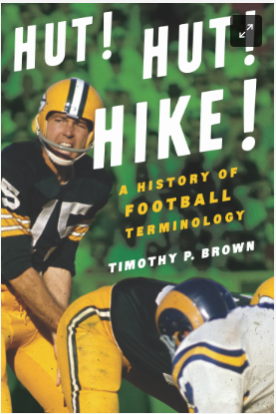Chris Pronger A Towering Force and Champion on Defense
Early Promise and Blossoming into a Star (1993-2002):
Drafted second overall by the Hartford Whalers in 1993, Pronger's raw talent was evident from the start. He quickly established himself as a force on defense, combining a punishing physical presence with a surprising offensive ability. After the Whalers relocated to become the Carolina Hurricanes, Pronger's leadership qualities blossomed, guiding the team to their first-ever Stanley Cup Finals appearance in 2002.
A Well-Traveled Champion: Stints of Excellence (2002-2009):
Pronger's career was marked by several impactful trades. His arrival in Edmonton revitalized the Oilers, and his leadership helped them reach the Stanley Cup Finals in 2006. After a brief stint in Anaheim, he landed with the Anaheim Ducks in 2005, where he formed a formidable defensive partnership with Scott Niedermayer. This duo proved instrumental in the Ducks' Stanley Cup victory in 2007, with Pronger earning the Conn Smythe Trophy as playoff MVP.
Later Career and Continued Impact (2009-2014):
Pronger's final years were marked by injuries, but his impact remained undeniable. He captained the Philadelphia Flyers for a period, his leadership and experience guiding a young team. While his playing career ended prematurely in 2014, Pronger left an indelible mark on every team he suited up for.
Born October 10, 1974, in Dryden, Ontario, was Hockey Hall of Fame Defenseman, Chris Pronger. This legendary skater won a Stanley Cup title with the Anaheim Ducks. Pronger was a four-time NHL All-Star and Norris Trophy winner and the Hart Memorial Trophy as the NHL's most valuable player in 1999-2000. Besides the Ducks, Chris skated for the Hartford Whalers, St Louis Blues, Edmonton Oilers, and Philadelphia Flyers during his brilliant 18-year career. In 2017, he was named one of the "100 Greatest NHL Players" in NHL history.
Dave Andreychuk Powerhouse Forward and Hockey Hall of Famer
Early Career and Rising Star (1982-1993):
-Drafted by the Buffalo Sabres in 1982, Andreychuk showcased his offensive potential early on. He led the team in goals for several seasons, establishing himself as a fan favorite.
-Despite his individual brilliance, team success with the Sabres remained elusive.
A Journeyman with a Scoring Touch (1993-2004):
-Throughout his career, Andreychuk played for eight different teams, including the Toronto Maple Leafs, New Jersey Devils, Boston Bruins, Colorado Avalanche, and Tampa Bay Lightning.
-This journeyman status didn't hinder his scoring ability.
-He consistently ranked among the league's top goal scorers, twice leading the NHL in power-play goals.
Power-Play King and a Long-Awaited Stanley Cup (2004-2006):
-Andreychuk's ability to capitalize on power-play opportunities was unmatched. He holds the NHL record for most career power-play goals (274), a testament to his lethal one-timer.
-In 2004, Andreychuk finally achieved his dream of winning the Stanley Cup as captain of the Tampa Bay Lightning. This victory, at the age of 41, capped off a remarkable career.
A Legacy Beyond the Statistics:
-Andreychuk's impact transcended his impressive goal-scoring numbers. He possessed a strong work ethic and leadership qualities, earning the respect of teammates and coaches alike.
-His adaptability and consistent performance across multiple teams solidify his reputation as a true hockey legend.
A Hall of Fame Recognition:
-Andreychuk's dedication to the game was formally recognized in 2017 when he was inducted into the Hockey Hall of Fame.
-With his name etched alongside the sport's greats, his legacy as a prolific scorer and Stanley Cup champion is forever secured.
Born September 29, 1963, in Hamilton, Ontario, was Hockey Hall of Fame Left Wing Dave Andreychuk. This legend accomplished a Stanley Cup Championship during his 23-year NHL career. Anderychuk was picked 16th overall in the first round of the NHL Entry Draft by the Buffalo Sabres. Dave was with the Sabres club for 12 seasons and then went on to play for the Toronto Maple Leafs, New Jersey Devils, Boston Bruins, Colorado Avalanche, and Tampa Bay Lightning.
Jim Edmonds
Harmon Killebrew A Homerun Machine
Killebrew was known for his towering home runs and amassed an impressive resume:
573 career home runs (12th all-time at retirement)
8 seasons with 40 or more home runs (second only to Babe Ruth in the AL)
6-time American League home run leader
3-time American League RBI leader
1969 American League Most Valuable Player Award
Though a quiet man off the field, Killebrew's bat spoke volumes. He helped lead the Twins to the postseason three times and was inducted into the National Baseball Hall of Fame in 1984.
Born June 29, 1936, in Payette, Idaho, was Baseball Hall of Fame First base and Utility man Harmon Killebrew. Harmon was a thirteen-time MLB All-Star; AL MVP 1969; and a six-time AL Home Run leader during his illustrious career in baseball. He played on the rosters of the Washington Senators and Minnesota Twins. The man could make the ball find the back of the fence, Killebrew had the fifth-most home runs in major league history at the time of his retirement. He was second only to Babe Ruth in American League (AL) home runs, and was the AL career leader in home runs by a right-handed batter. Harmon was known for both the frequency and distance of his homers. He hit the longest home runs ever recorded at Minnesota's Metropolitan Stadium [520 ft (160 m)], and Baltimore's Memorial Stadium [471 ft (144 m)], and was the first of four players to hit a ball over the left field roof at Detroit's Tiger Stadium.
KC Jones
Gail Goodrich and His Finesse and Fury of A Hall of Fame Legacy
Goodrich's basketball journey began in Los Angeles, where he honed his skills on the playgrounds before starring for UCLA under the legendary coach John Wooden. Playing alongside Walt Hazzard, Goodrich formed a dynamic duo that led the Bruins to their first two NCAA championships in 1964 (a perfect 30-0 season) and 1965. In the 1965 title game, Goodrich solidified his legacy by scoring a then-record 42 points against Michigan, cementing his reputation as a clutch performer.
Drafted by his hometown Los Angeles Lakers in 1965, Goodrich quickly transitioned to the professional level. While he shared the spotlight with the dominant center, Wilt Chamberlain, Goodrich's contributions were undeniable. He played a cerebral brand of basketball, utilizing his intelligence and court vision to create scoring opportunities for himself and his teammates. His quick release and ability to shoot from anywhere on the court earned him the nickname "Stumpy" despite his average height.
After three seasons with the Lakers, Goodrich was traded to the Phoenix Suns, a move that would prove to be a turning point for both player and team. He emerged as the Suns' scoring leader, captivating fans with his electrifying performances. His influence extended beyond the court; he played a pivotal role in establishing Phoenix as a legitimate contender and paved the way for future superstar point guards like Kevin Johnson and Jason Kidd.
In 1970, Goodrich made a triumphant return to the Lakers, reuniting with Chamberlain for another shot at the title. The 1971-72 season proved to be a golden year for the Lakers, with Goodrich emerging as the team's leading scorer. He played a pivotal role in their record-breaking 33-game winning streak and their eventual NBA championship victory. This cemented his status as a true champion, both in college and the professional ranks.
Goodrich's career continued for several years, playing for the Lakers and New Orleans Jazz (now Utah Jazz) until his retirement in 1979. He finished with impressive career averages of 18.6 points per game and was selected to five NBA All-Star Games. More importantly, he earned respect from coaches, teammates, and fans for his sportsmanship and intelligence on the court.
Gail Goodrich's legacy extends beyond his accolades. He was one of the first players to fully utilize the jump shot, paving the way for future shooting guards. His success with both UCLA and the NBA further blurred the lines between college and professional basketball, demonstrating the value of a balanced skillset at the highest levels. In 1996, Goodrich's basketball brilliance was recognized by his induction into the Naismith Memorial Basketball Hall of Fame.





.jpg?https://jerseydispatch.com/pfeL/p/c312642c0431e75b485e432232c99c1c/website/Sports-History-Photo-of-the-Day/February-Images/February-4-Image/images/.Strathconas_First_Hockey_Team_(21879505322).jpg)




